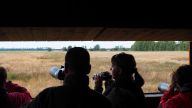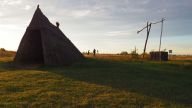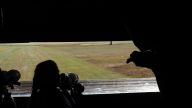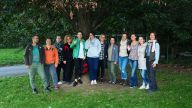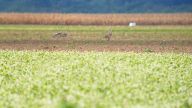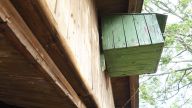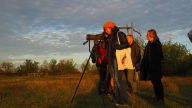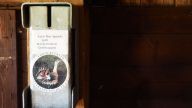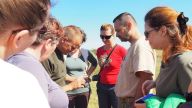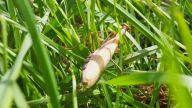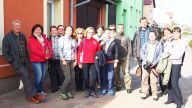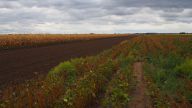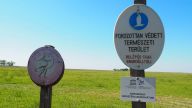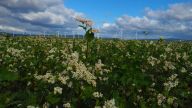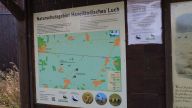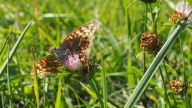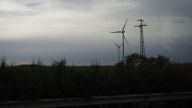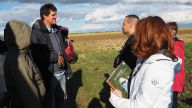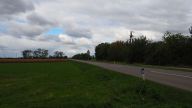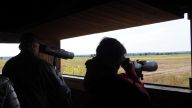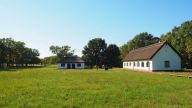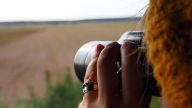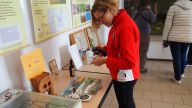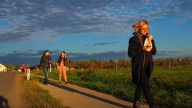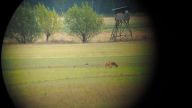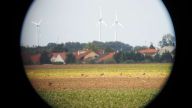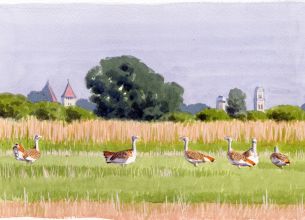The rehabilitation of the reed lake, a swamp that had become eutrophicated in the Culișer meadow, located in Salonta, Bihor county, has been carried out in the past 3 years within our project based on cross-border public-private partnership.
Orbiting Around the Great Bustard [Travelogue]

11 October 2018
Study Tour I (23–29 September 2018, Austria – Germany – Hungary) // 3,299 km / 3 conservation sites / cca 250 bustards
![Orbiting Around the Great Bustard [Travelogue]](/img/cache/P9260289_9d789beca4_1024x576.jpg)
We left on a special day. It was Sunday, 23 September, my father’s birthday. Although we live not far from the (N.B. Romanian-Hungarian) border, I felt the change of scenery immediately. The towns were small, and appealing, plenty of trees, bicycle tracks, wind turbines, motorways, and people only few and far between. If I had I to describe only in a few words the six-day trip spent in the minibus, I would say: gas stations, wind turbines and Promises, the new single of Sam Smith that I heard on every radio station, in every country that we went through. Still, this text is not about the trip seen from inside the bus, but about the world it was rolling in. And we, 11 women and one man, of whom only two were nature conservation specialists, have been orbiting around the Great Bustard, with our minibus altogether.
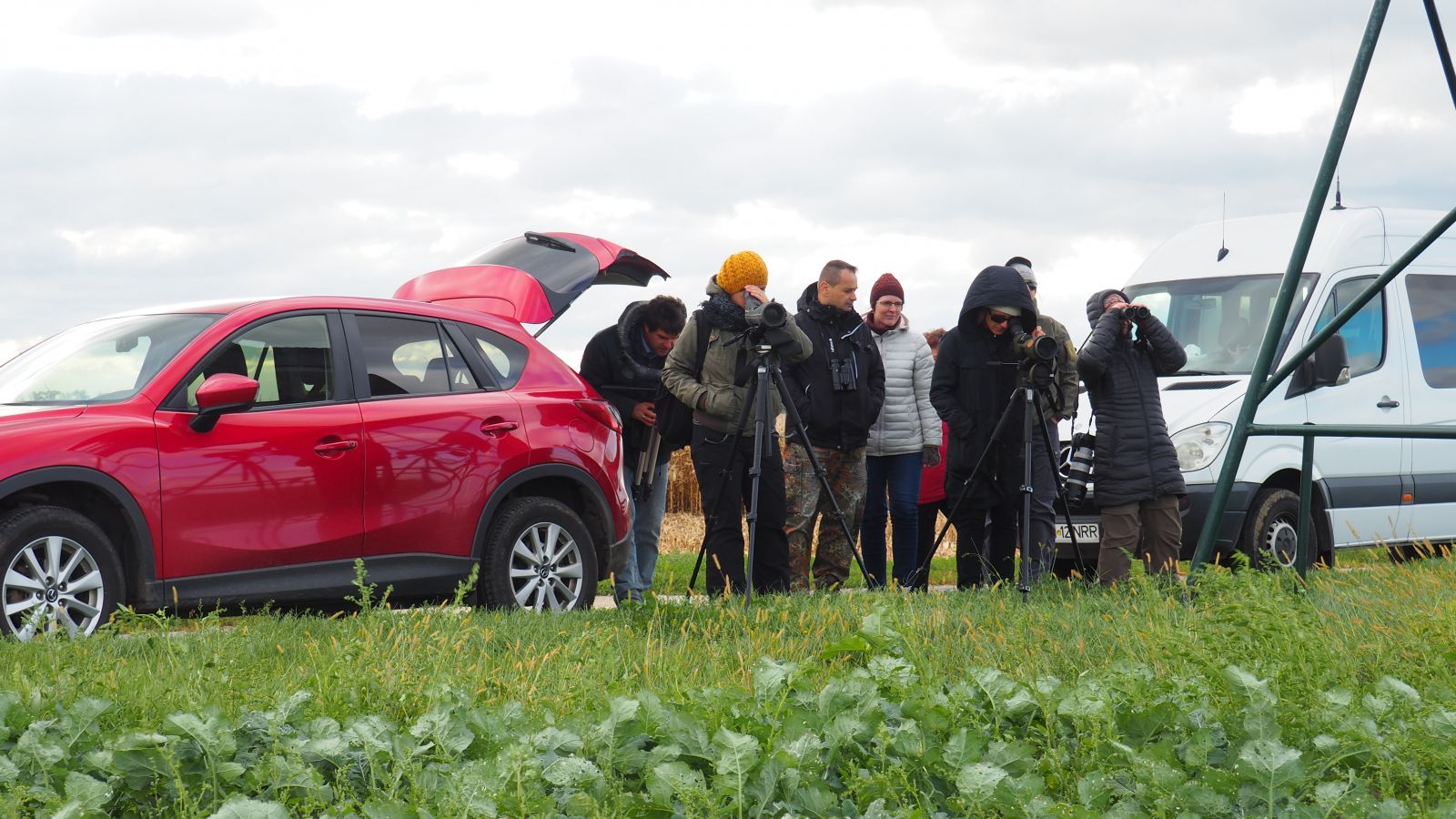
in the tri-border area.
Austria
Our first visit started almost as a test: we woke up at 5:45am. We were going to meet Rainer Raab, PhD, in Deutsch Jahrndorf (Austria) very early, in a cold, windy morning. Rainer has been involved in cross-border Great Bustard conservation projects since 1999. The lowest number of bustards living on Austrian territories used to be about 60, he tells us. This happened in 1995. The entire West-Pannonian population consisted of 120 individuals. In 2018, there were 505.
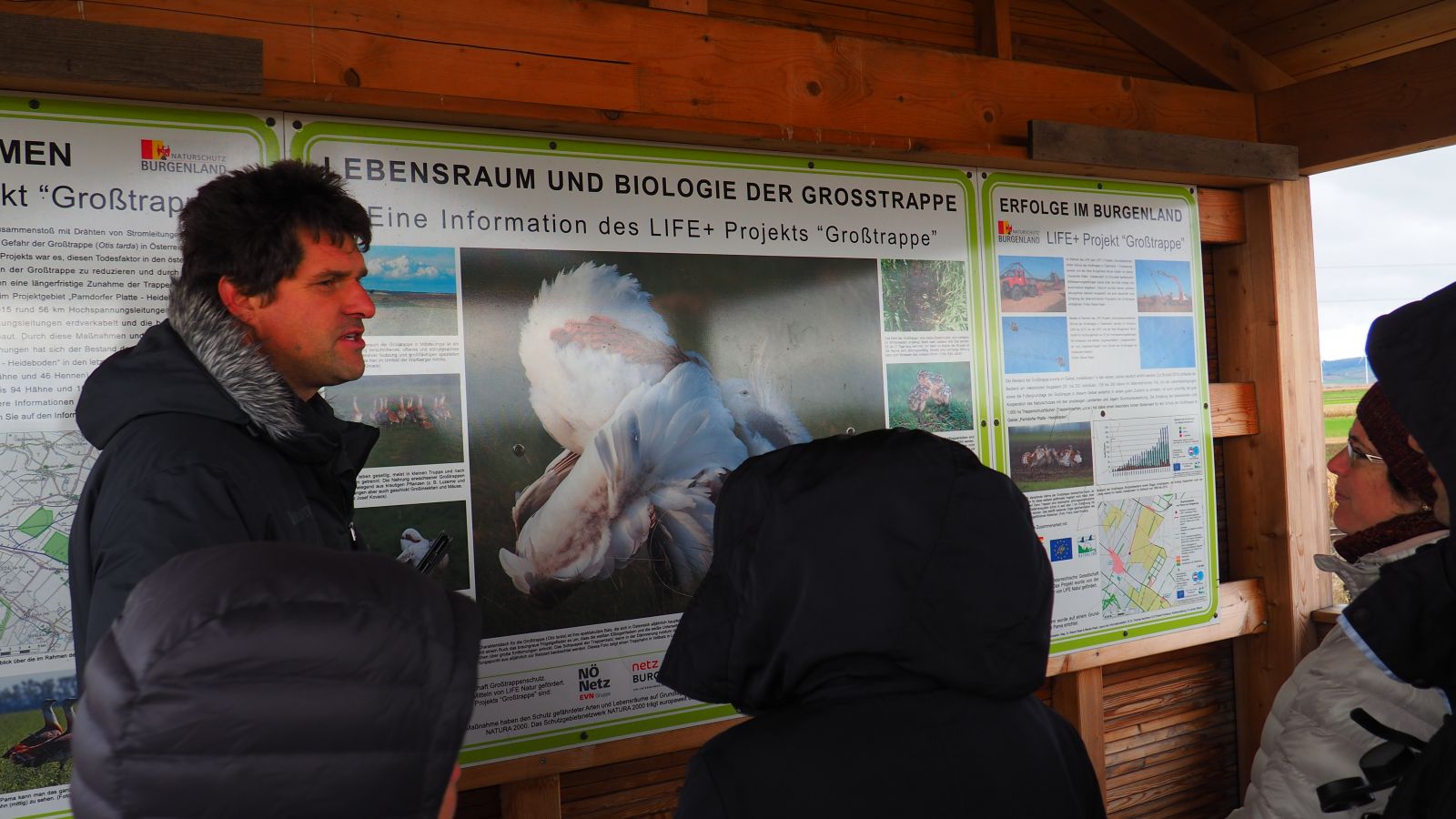
conservation projects, Austria.
The Natura 2000 areas offered the framework for the protection of the habitat, but this was not enough. The cooperation with the 300 local farmers was crucial. Over the years, they have been receiving financial compensations for embracing bustard-friendly crops, and farming methods. The most dangerous medium voltage power lines were transferred underground. The total value of the investments made mainly for the conservation of bustards rose up 50 million Euros, said Rainer nonchalantly.
Rainer is that kind of an entrepreneur that you don’t see very often. Cheerfully, someone notices a Red Kite. Immediately, Rainer shows us a video that he took last winter, when he spent two weeks in France, Spain, and Portugal in the pursuit of his Red Kites while on their wintering grounds. It’s impossible not to notice the affection, the care, and the dedication, this man feels for his birds. We stopped for a few times on each side of the Austrian, Hungarian, and Slovakian tri-border area to observe droves of bustards feeding on rapeseed. Rainer showed us mixed plots of organic mustard, soy, and buckwheat. His enthusiasm is utterly contagious. We said goodbye smiling. This time, there was no wind at all, only a glorious sun above.
Germany
Two days later we arrived to Buckow (Germany), where we met Torsten Langgemach, PhD. He used to be a veterinarian, and became a conservationist. He welcomed us with a box of apples that he picked himself from the apple tree near the visitor centre. We walk up the stairs of the first observation tower. He tells us about the Great Bustard conservation areas (three, in total), and the enclosures, which they used to enhance protection. Torsten reveals that the bustards have quickly noticed that the enclosure protected them against foxes. For that reason, the females used to get inside either for the night, or for nesting and even while raising the chicks. Interestingly, he adds, not only the bustards seem to do that, but also the Grey Partridges, and the Montagu's Harriers, too. The first enclosure was built in 1990, and was made up of various remains of the Berlin Wall. We also learn about ecotone, and its high level of biodiversity, while one by one, we watch the bustards through a telescope. We also notice two cranes.
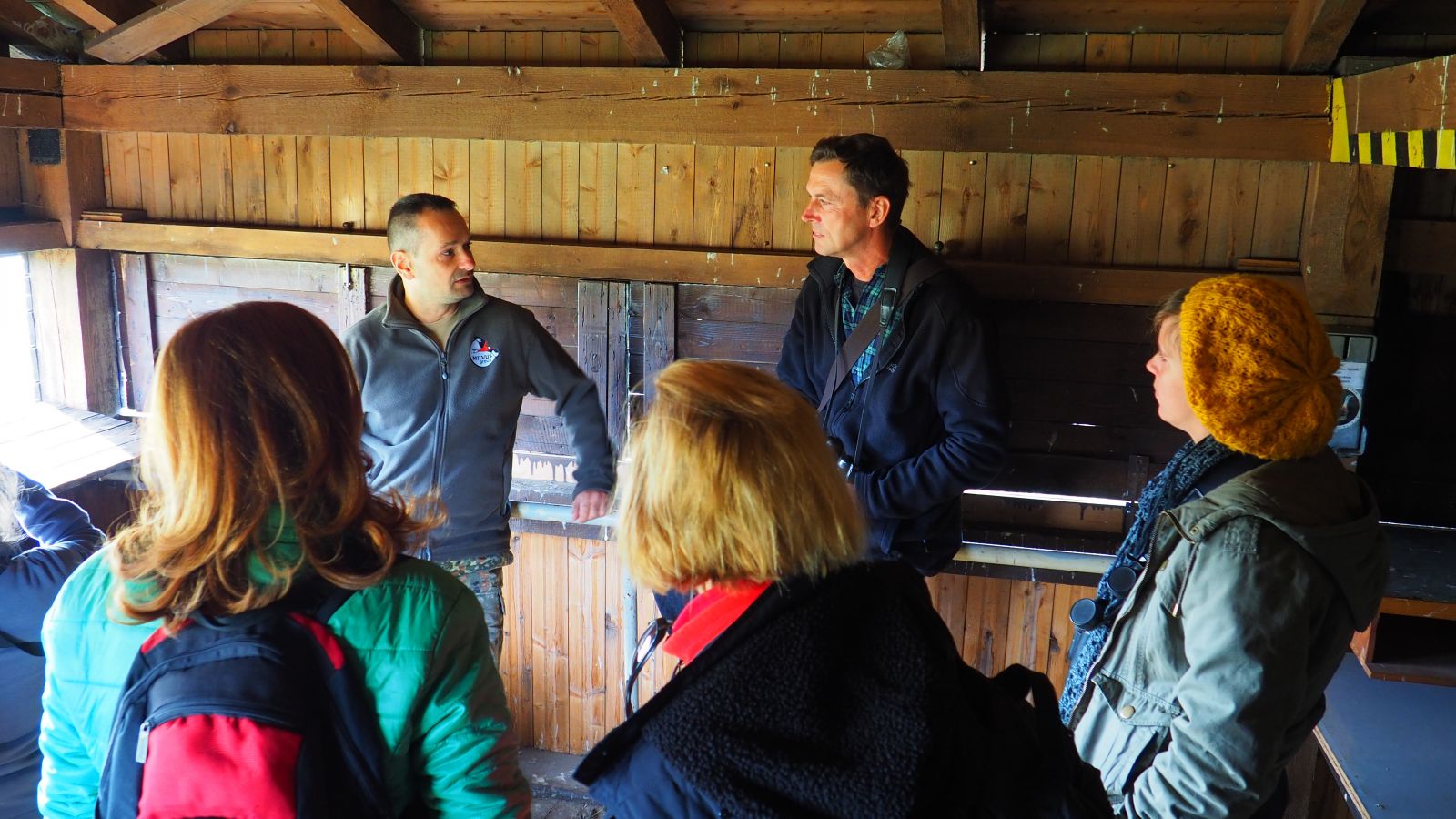
Havelland Luch, Germany.
The site, Havelländische Luch, has a special protection status. The size of the area exceeds 5,000 hectares, of which 1,000 is state owned, which is rented to farmers. There are about 30 farmers, and they all get compensations from the German government for meeting the imposed conservation restrictions.
It’s impossible not to be fascinated by Torsten. He shared his knowledge and experience with us in a very natural and humble manner. He tells us that, 10 years ago, they registered the lowest number of bustards in the Brandenburg province: 57 individuals. At that time, those represented the only population of Great Bustards in Germany. This year, they counted 259. We leave the observation tower full of House Martin nests, and head toward another one, where we are about to see boxes for Barn Owls and Common Kestrels. But before that, we stop at the Brandenburg Land Conservation Centre in Buckow to admire some superb dioramas.
Hungary
The journey to Kiskunság from Germany was long, and tiring. It was Friday already, when we met Lóránt Miklós, conservation area inspector at Kiskunság National Park, as stated on his business card. Miklós presented us the habitat of the bustards – the steppes, and the typical local landscape: pastures, meadows, and farming lands, which resulted after the drainage of the ancient wetlands. Here, lives one of the largest Great Bustard population of the Pannonian Basin. Miklós tells us firmly: “if we can decrease the mortality rate, and increase natality, we can make a population grow.”
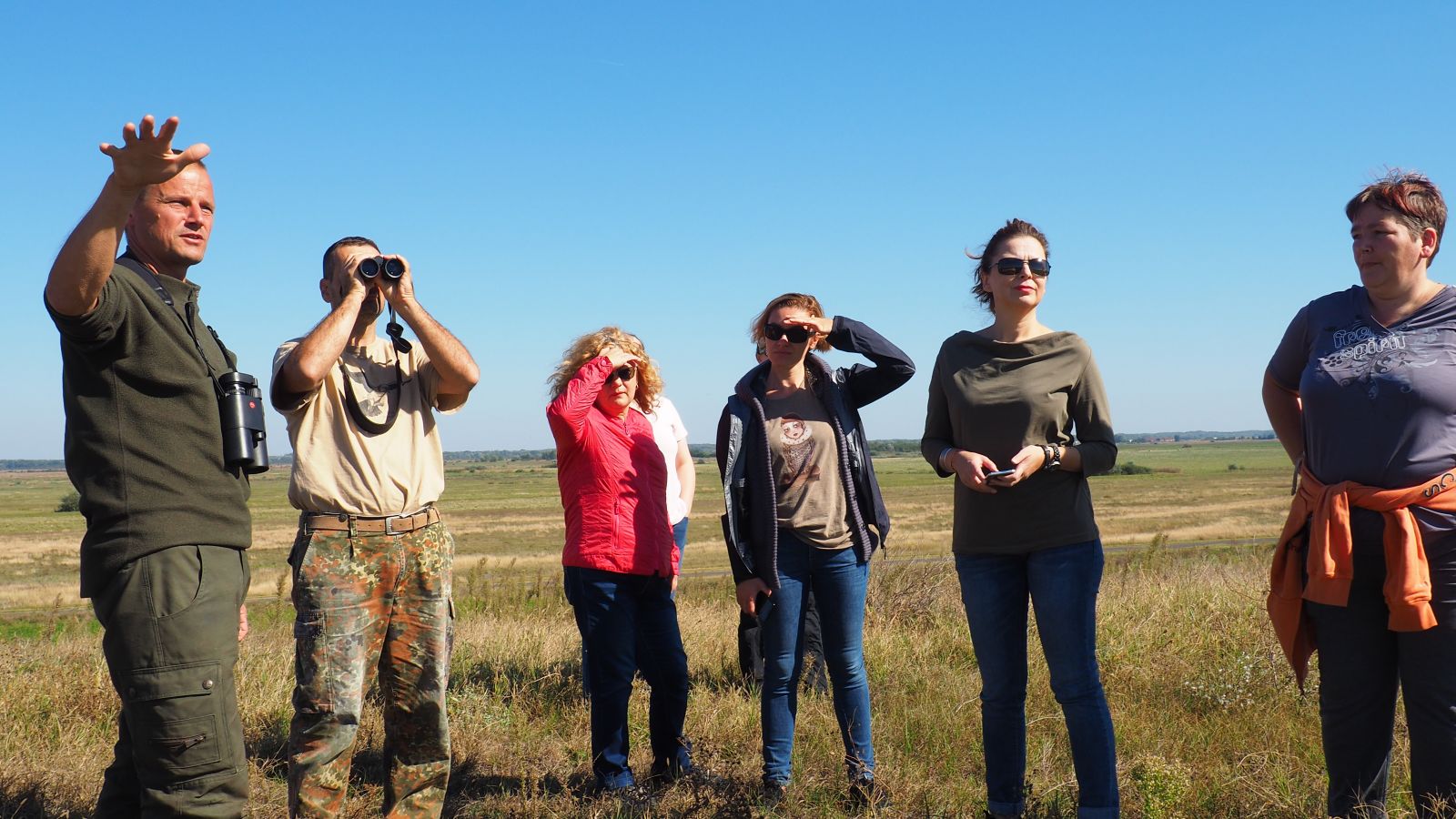
Kiskunság National Park, Hungary
Tackling the medium voltage power lines, the most common cause of mortality among bustards, was a priority. This was possible within conservation actions of several LIFE Programmes, financed by the EU. We were all baffled when Miklós recounted that two energy supplier companies offered to transfer underground at their own cost 36, and respectively, 60 km medium voltage power lines. Additionally, the partnership with the farmers reached a very high performance level. The agri-environmental programme, in its 4th cycle, became ideal for the bustards, and less complicated for the farmers. While we inspect the nesting areas, Miklós reveals that, this year, they mounted GPS tracks on four chicks. And much to their surprise, it seems that the six-weeks old chicks (or even older - who can already fly) did not leave the tall grass areas, where their mother nested. “They do not like to fly”, added the inspector amusingly. Our meeting ended in the yard of a new visitor centre that will soon welcome tourists eager to discover the natural assets that the national park protects.
We travelled 3,299 km, visited three project sites, and saw about 250 bustards. The study tour was a long but useful journey. No matter if we saw bustards for the very first time or not, we were all able to perceive the sheer amount of conservation work, which is not often visible to the naked eye. Our journey for the conservation of the Great Bustard population in Salonta took a huge step with this project, and to us, the partnership with the Salonta City Hall is a smash hit, just like Sam Smith’s with Calvin Harris, no less.
Text and photos: Laura Turdean, Milvus Group

